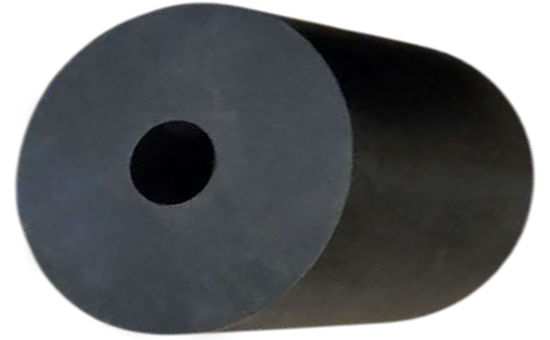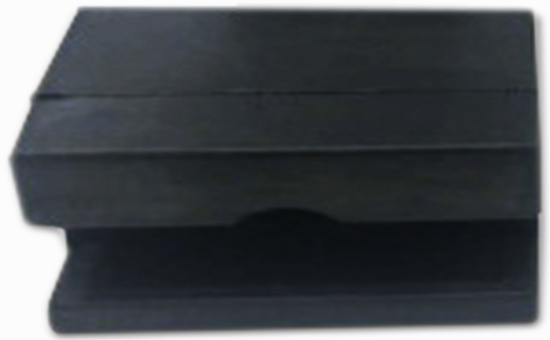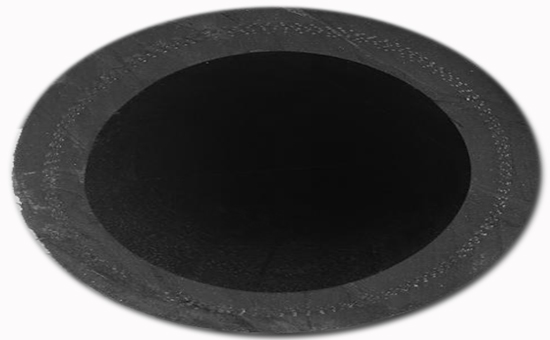
Rubber hardness is an important indicator to measure the degree of compression deformation or puncture resistance of the rubber, and it is usually expressed by Shore hardness. In actual production, the hardness of rubber products of different varieties and different occasions is different. Tire reclaimed rubber is the main variety of high-priced raw rubber replacement materials. It can be used alone or in combination with natural rubber, styrene butadiene rubber, butadiene rubber, etc. to produce rubber products with different hardnesses, effectively reducing the cost of raw materials. The editor today shares with you several general compound formulas with a Shore hardness of about 40 degrees.
Formula 1: 100 parts of natural rubber, 15 parts of reclaimed tire rubber, 5 parts of zinc oxide, 3 parts of stearic acid, 1 part of antioxidant D, 1.5 parts of paraffin wax, 10 parts of carbon black N330, 10 parts of carbon black N774, 10 parts of light calcium Parts, 25 parts of engine oil, 20 parts of black ointment, 1 part of accelerator DM, 1 part of accelerator M, 2 parts of sulfur; total: 204.5 parts.
Vulcanization conditions: 143℃×20min; vulcanized rubber hardness (Sauer A type): 44 degrees.

Formulation 2: 79 parts of natural rubber, 41 parts of whole tire reclaimed rubber, 3.9 parts of zinc oxide, 1.4 parts of stearic acid, 0.6 parts of antioxidant D, 1.2 parts of paraffin wax, 9 parts of mixed carbon black, 47 parts of spray carbon black, weight 3.5 parts of calcium, 15.3 parts of engine oil, 0.4 parts of accelerator M, 0.34 parts of accelerator TMTD, 1.86 parts of sulfur; total: 204.5 parts.
Vulcanization conditions: 153℃×10min; vulcanized rubber hardness (Sauer A type): 41 degrees.
Formula 3: 90 parts of styrene butadiene rubber, 15 parts of reclaimed tire rubber, 5 parts of zinc oxide, 1 part of stearic acid, 1 part of antioxidant 4010NA, 1.9 parts of paraffin, 550 20 parts of carbon black, 23 parts of carbon black N774, and 40 parts of clay Parts, 25 parts of aromatic oil, 12 parts of petroleum pitch, 5 parts of petroleum jelly, 0.15 parts of accelerator D, 1.35 parts of accelerator DM, 2 parts of sulfur; total: 242.4 parts.
Vulcanization conditions: 150℃×13min; vulcanized rubber hardness (Sauer A type): 45 degrees.

Every year, a large number of waste automobile tires are produced in our country. Processing waste tires into reclaimed rubber is currently the main way to solve the problem of waste tire stacking. Compared with latex reclaimed rubber, nitrile reclaimed rubber, butyl reclaimed rubber and EPDM reclaimed rubber 2YLYY1018 and other products, tire reclaimed rubber has more raw materials and lower prices. It can be used alone or in combination with natural rubber and general synthetic rubber. It can also be used in the production of rubber products to reduce the cost of raw materials and production energy consumption. It can also be used in conjunction with special rubber and reclaimed rubber. The editor will continue to discuss related issues with you later.
Exclusive original article [commercial authorization] reprint, excerpt and excerpt in any form are prohibited without written authorization. Focus on Hongyun rubber: learn the process formula and raw material technology of producing rubber products from recycled rubber to help you reduce costs and increase profits